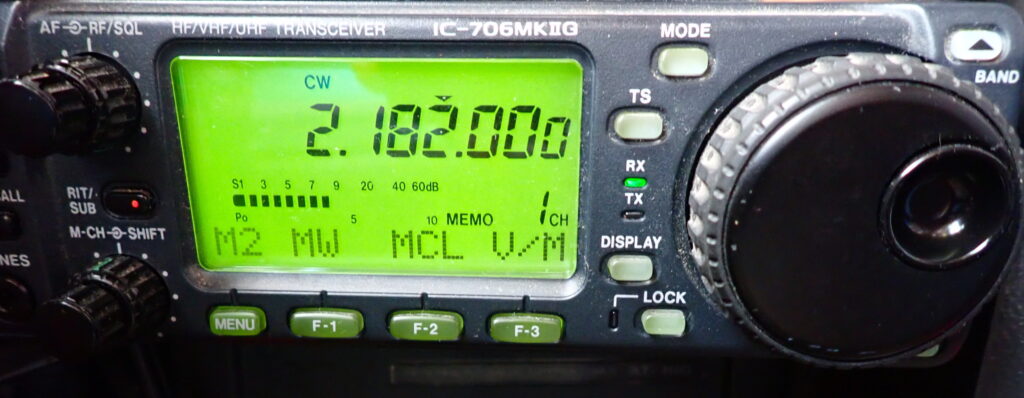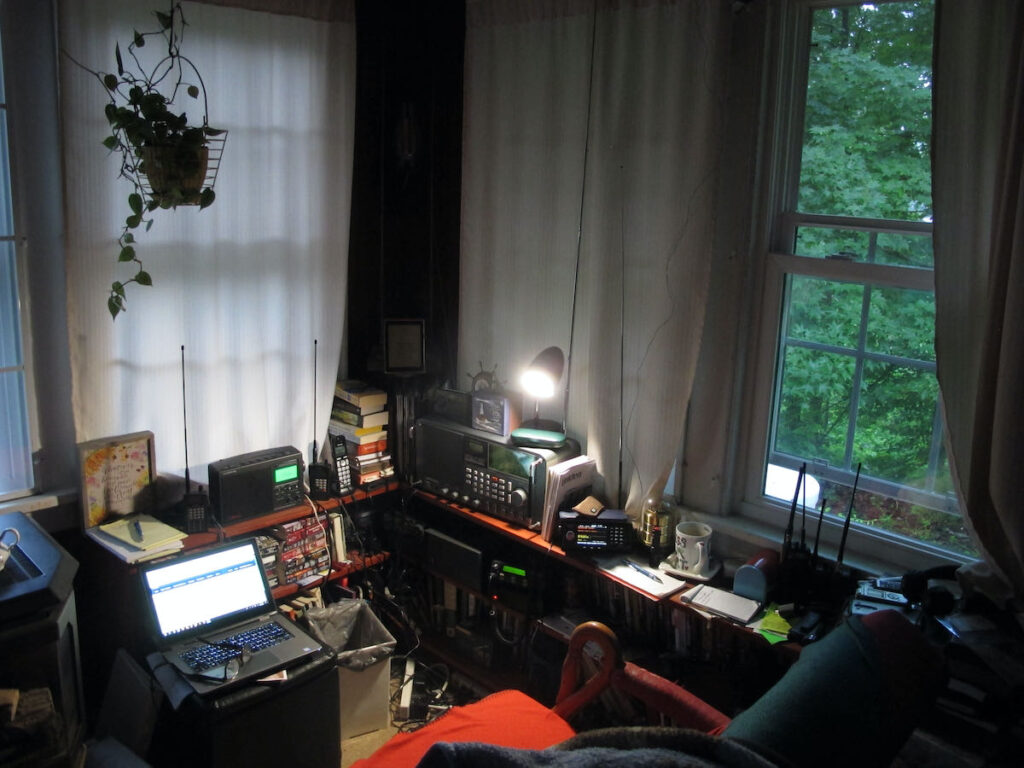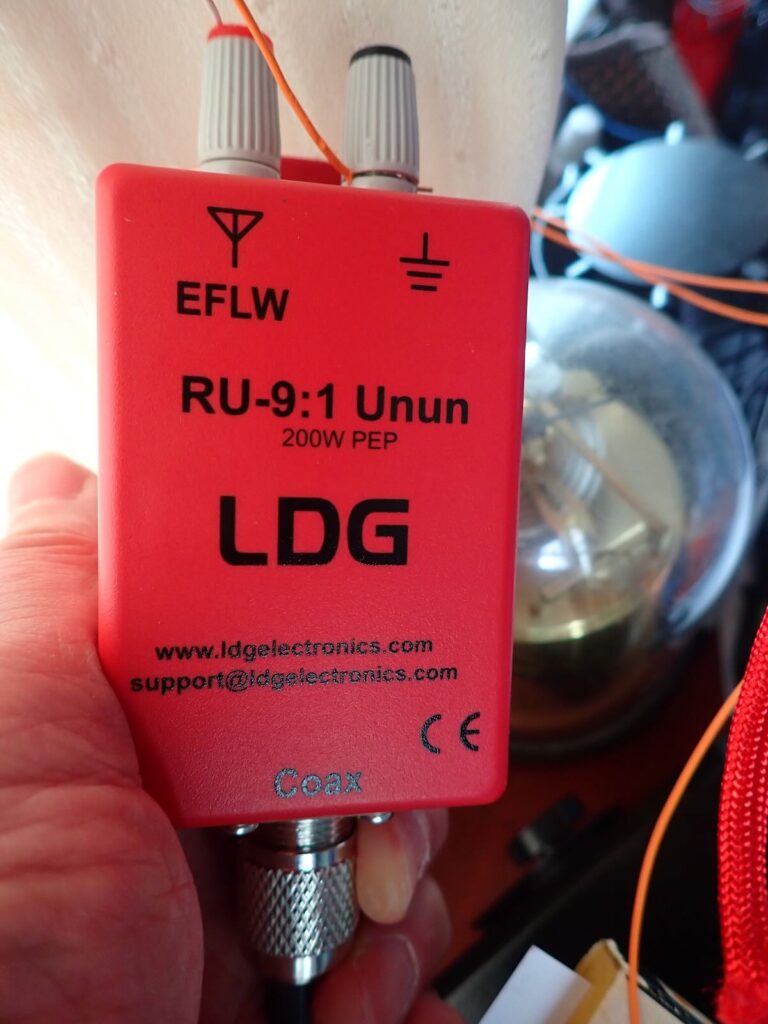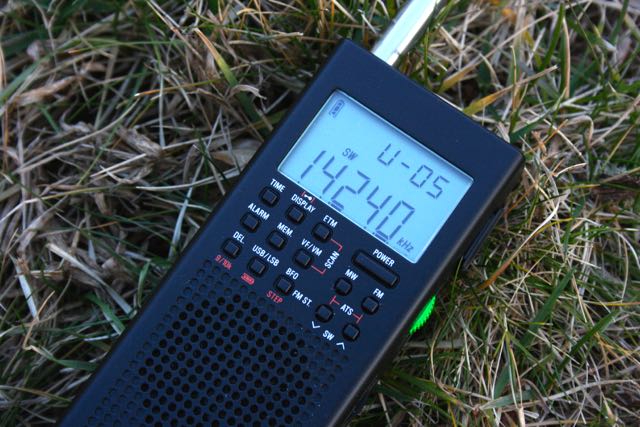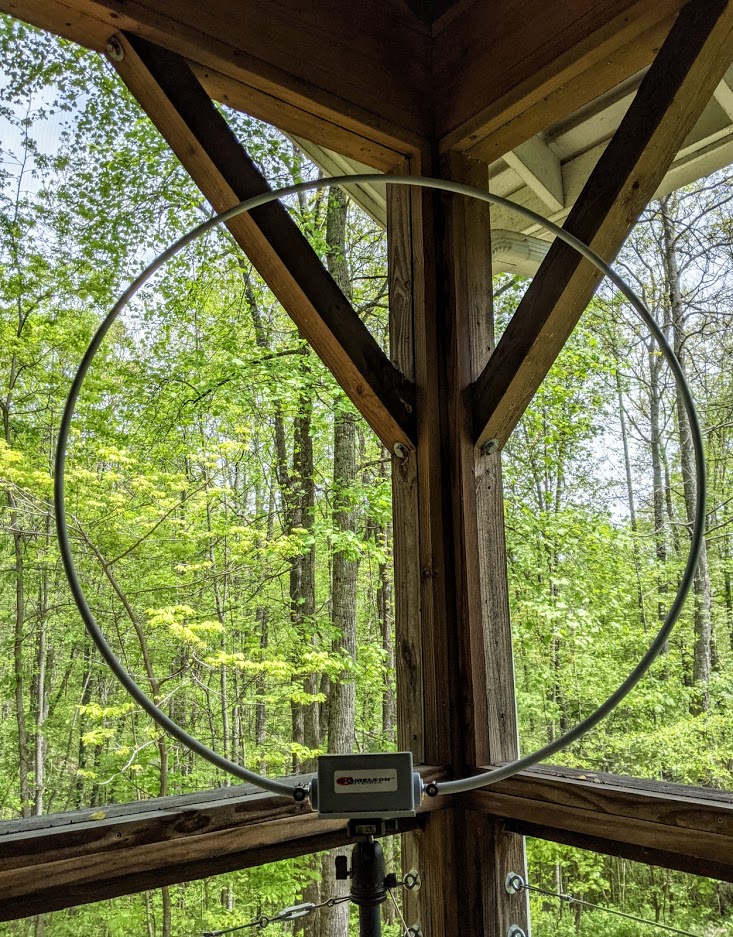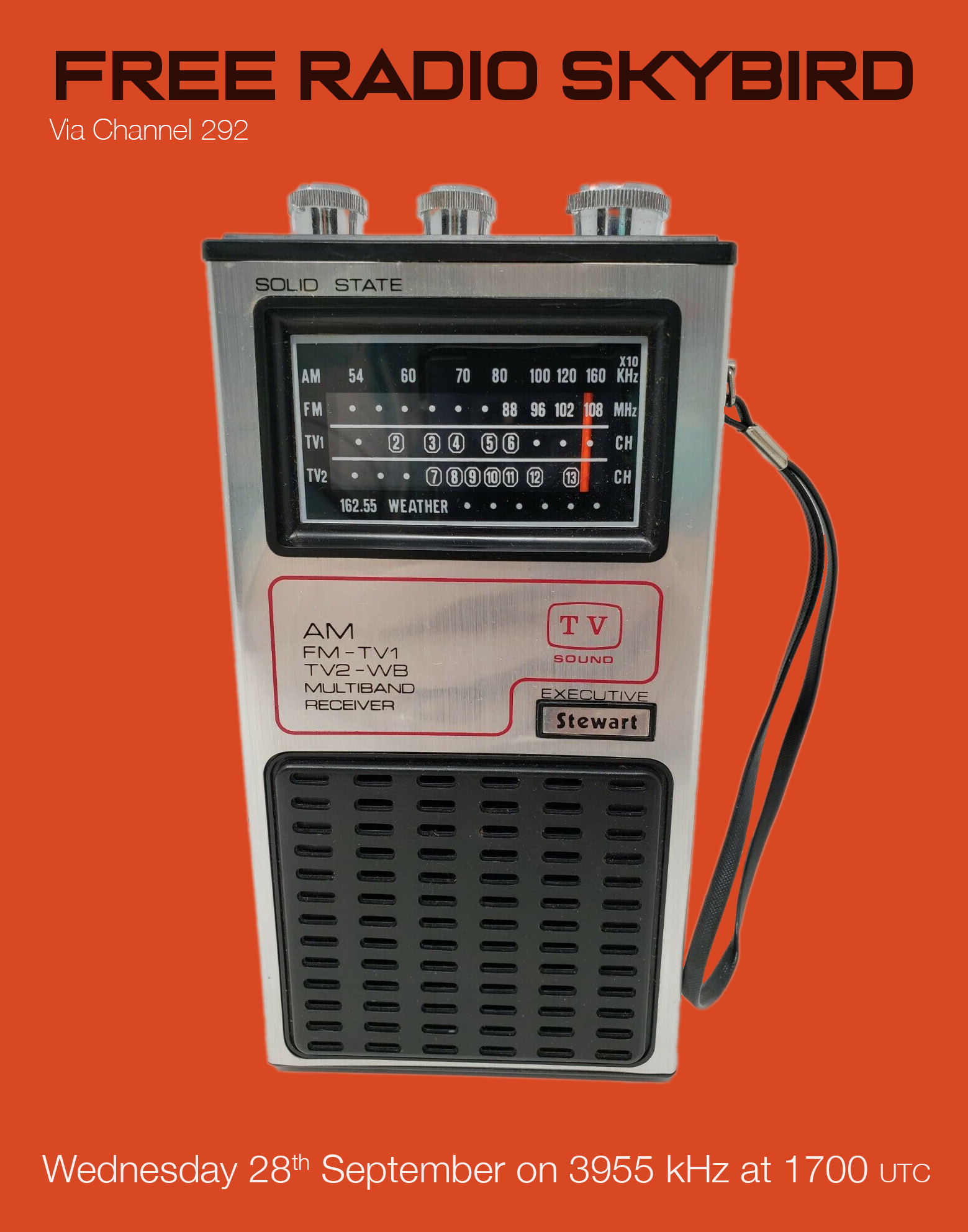 Hi SWLing post community. On Wednesday 28th September there’s the return of Radio Free Skybird via Channel 292. The broadcast will beamed to Europe at 1700 UTC on 3955 kHz and features a freeform blend of music & culture from the 1960s to the present day for all to enjoy! Fastradioburst23
Hi SWLing post community. On Wednesday 28th September there’s the return of Radio Free Skybird via Channel 292. The broadcast will beamed to Europe at 1700 UTC on 3955 kHz and features a freeform blend of music & culture from the 1960s to the present day for all to enjoy! Fastradioburst23
Teaching an old dog old tricks
It was Don Moore’s excellent article — An Introduction to DXing the MF Marine Bands — that inspired me. If you haven’t read it, do so now; it’s terrific. But be warned: my guess is that it will inspire you too.
Bottom line, ever since I read it, I have very much wanted to hear at least some of those MF marine stations that Don writes about. One of Don’s recommendations is “Hang Out on 2182 kHz.” So sometimes when I am messing around in the radio shack, I will park one of my shortwave receivers on 2182 USB in the hopes of hearing some marine communications. 2182 is the frequency that the US Coast Guard once monitored as a distress frequency, but no more.
According to Don: “Today 2182 kHz still gets some use as a calling frequency, where a ship and a shore station quickly arrange to have a conversation on another frequency. But the more common use now is for shore-based marine broadcasters to pre-announce marine information broadcasts they are about to transmit on other frequencies.”
Just the other day, I brought up 2182 on my Satellit 800, but the atmospheric noise was pretty bad. I fooled around with a couple of different indoor wire antenna configurations but wasn’t able to achieve any substantial improvement. But in the midst of that messing around, I “rediscovered” my Icom IC-706 MkIIG on a shelf. It receives from 30 kHz to 199 MHz and from 400 to 470 MHz, and I used mine for over a decade to run the Commuter Assistance Network on two meters. I still keep the 706 as a back-up in case my main rig for running the net goes down.
But I had never used the 706 extensively on HF (weird, I know, but that’s the truth). Nevertheless, a little voice in the back of my head (probably one of the brain dudes) kept saying “Why don’t you give the 706 a try as an HF receiver?”
So I did. I hooked up the 706 up to my horizontal room loop through some coax and an LDG 9:1 unun (the same antenna setup I had been using on the Satellit 800). And – shazam – the 706 is substantially quieter on 2182 with that antenna than the Satellit 800.
That’s good, I thought, but what if the 706 appears to be quieter because it is less sensitive? So I did some comparative tests with the 706 and the Satellit 800 on the 80 and 40 meter ham bands and satisfied myself that the 706 is both quieter and more sensitive than the Satellit 800. I could just plain hear the signals better (and more pleasantly) with the 706.
The only substantial weirdness with the Icom 706 MkIIG is that, as a small unit, it has relatively few buttons on its face. As a result, it has no keypad for direct frequency access. There are buttons for jumping from one ham band to another and another button for changing tuning steps, so with judicious use of those buttons and the tuning knob, it’s fairly easy to get from one frequency to another, but it is not as fast as direct entry.
And, of course, the 706 does not have all the cool seek-and-store functions and the like that are available on today’s really slick shortwave portables.
Here’s the upshot: if you’ve been on the hunt for a better HF receiver with single sideband capabilities, an old dog, like an old ham transceiver, might be just what you need. And if you are already enjoying an old ham transceiver as a shortwave receiver, I’d like to hear about it.
So, have I heard any of those cool MW maritime stations? Not yet, but I’m sure I’ll have fun trying!
Solid copy: Tom receives JG2XA in the Netherlands on his PL-365
Many thanks to SWLing Post contributor, Tom Kamp (PA/DF5JL), who shares the following brief report and video:
Today (September 21, 2022) around 2015 UT strong signal on 5006 kHz (CF) from JG2XA beacon from Japan (0.2 kW) near Den Helder, in North-Holland, The Netherlands.
JG2XA transmits continuously at 200 W on 5006 kHz and 8006 kHz. The type of radio signal is H2A (amplitude modulation with coded tones in the single sideband).
Received with the Tecsun PL-368 and the built-in telescopic antenna! The dBm display of the unit is very inaccurate (in USB), yet S5-S7 should be rated appropriately. Top signal, top RX ?
73 Tom Kamp PA/DF5JL
That’s quite a catch for the PL-365. Thanks for sharing this, Tom!
On a shortwave magic carpet ride
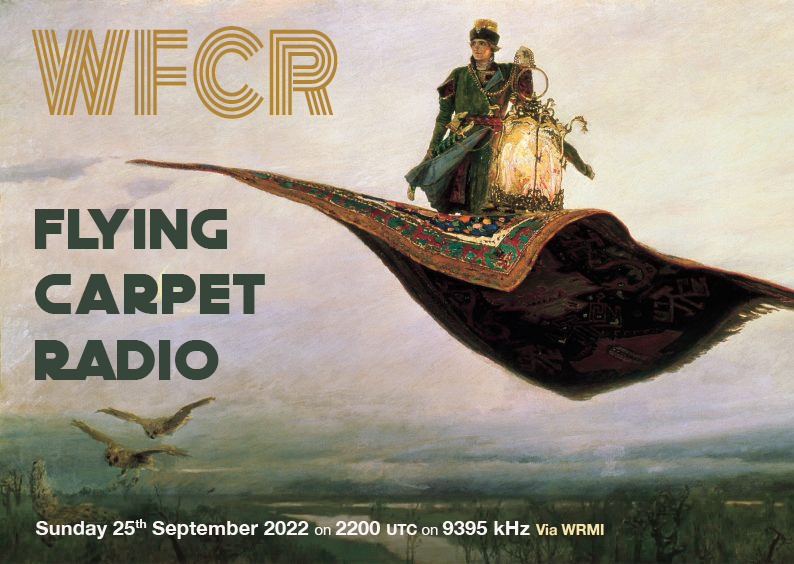 Hi SWLing post community, just to let you all know this weekend there’s another in the Imaginary Stations series, this time the return of WFCR – Flying Carpet Radio. The transmission will be on air on 9395 kHz from 2200 utc on Sunday 25th September 2022 via WRMI. Expect some apt magical tunes. Fastradioburst23.
Hi SWLing post community, just to let you all know this weekend there’s another in the Imaginary Stations series, this time the return of WFCR – Flying Carpet Radio. The transmission will be on air on 9395 kHz from 2200 utc on Sunday 25th September 2022 via WRMI. Expect some apt magical tunes. Fastradioburst23.
Radio Waves: Maverick-603 SDR for FT8, EC-130J Commando Solo Final Broadcast, WRTH Survey, and Railways On The Air
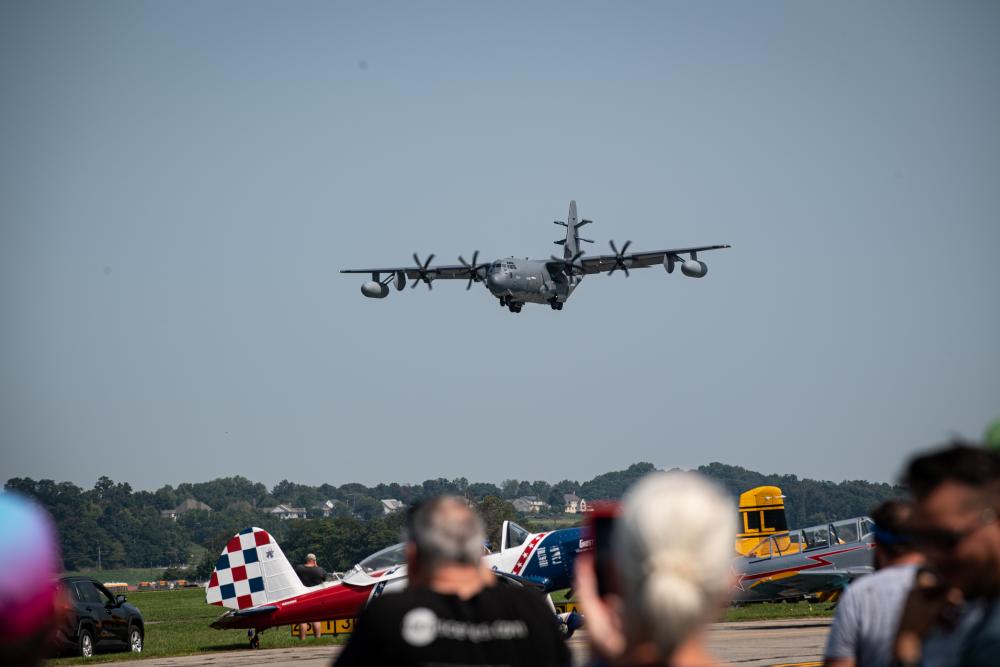
EC-130J Photo By Staff Sgt. Tony Harp | An EC-130J Commando Solo aircraft from the 193rd Special Operations Wing performs a flyover during Community Days at the Lancaster Airport in Lititz, Pennsylvania, Sept.17, 2022. (Source: DVIDS)
Radio Waves: Stories Making Waves in the World of Radio
Welcome to the SWLing Post’s Radio Waves, a collection of links to interesting stories making waves in the world of radio. Enjoy!
RadioStack’s Maverick-603 Is a Fully-Functional Open-Silicon Software-Defined Radio for FT8 (Hackster.io)
Built using open tools and readied for manufacturing at SkyWater using the Efabless platform, the chip on this SDR is something special.
New Hampshire-based RadioStack is looking to launch a piece of amateur radio equipment with a difference: the Maverick-603 is powered by free and open source silicon, built using the Efabless platform at a SkyWater fab.
“Maverick-603 is the first affordable FT8 receiver board built around an RF receiver chip that was designed using fully open source tools and fabrication,” its creators explain. “It is capable of acquiring FT8 signals between 7MHz and 70MHz. With this frequency range, you will be able to receive signals from around the world with high accuracy. The use of our Low Noise Amplifier (LNA) will also give the chip the ability to amplify very low-strength signals, which is necessary for an effective FT8 receiver.” [Continue reading…]
EC-130J Commando Solo performs final broadcast (DVIDS)
MIDDLETOWN, PA, UNITED STATES
09.17.2022
Story by Master Sgt. Alexander Farver
193rd Special Operations Wing
Airmen from the 193rd Special Operations Wing here, who operate the only flying military radio and TV broadcast platform in the U.S. military, transmitted their final broadcast today to spectators at the Community Days Air Show at Lancaster Airport, Lititz, Pa., bringing to close a 54-year chapter in unit history.
The EC-130J Commando Solo mission has helped keep this Air National Guard unit’s aircraft and its Airmen at the tip of spear for nearly every major U.S. military operation since the Vietnam War. Before bombs dropped or troops deployed in the Global War on Terror following the attacks on Sept. 11, 2001, this specially modified aircraft was already over the skies of Afghanistan broadcasting to America’s enemies that the U.S. military was bringing the fight to them.
“Any world event or crisis that our military has responded to in recent history, our 193rd Airmen – and Commando Solo – were likely key components in that response,” said Col. Eric McKissick, 193rd SOW vice commander. “As we prepare to open a new chapter in our history, we thank those who have enabled us to be among the very best wings in the Air National Guard.”
The genesis for this airborne information operations platform can be traced back to 1968 when the 193rd Tactical Electronics Warfare Group received its first aircraft, called the EC-121 Coronet Solo. In the late 1970s, the aircraft were replaced by the EC-130E before finally being replaced by the current aircraft in 2003. Throughout its history, it was instrumental in the success of coordinated military information support operations, earning the wing the moniker of “the most deployed unit in the Air National Guard.”
These deployments included: Operation Enduring Freedom, Operation Iraqi Freedom, Operations Odyssey Dawn/Unified Protector in Libya, Operation Inherent Resolve, Operation Resolute Support/Freedom’s Sentinel, Operation Secure Tomorrow and Operation Unified Response in Haiti.
Although this unique mission has earned the wing many prestigious accolades, Lt. Col. Michael Hackman, 193rd Special Operations Squadron commander, believes the mission’s success and legacy lies in winning the hearts and minds of adversaries and providing vital information to allies, refugees and victims in times of crisis.
“This capability has been an essential tool in our nation’s inventory, from the battlefields to assisting hurricane and earthquake-ravaged nations,” Hackman said. “During this time, thousands of Pennsylvania Air National Guard volunteers fulfilled their call to duty in this unique capacity, leveraging this capability against U.S. adversaries and supporting allies while always fulfilling the unit tenet of ‘Never Seen, Always Heard.’”
Aside from sporting an impressive operational record, the aircraft holds another distinction with having completed over 226,000 hours of accident-free flying.
“Having that many thousands of hours of accident-free flying is a testament to the excellence of our maintainers, to the operators and anybody who has touched that aircraft. Thank you for leaving that foundation and setting that example that we’re building from,” said Col. Jaime Ramirez, 193rd Special Operations Maintenance Group commander.
McKissick believes the success of the 193rd in operating the Commando Solo mission over the past few decades has led to Air Force Special Operations Command selecting the wing to be the first and only ANG unit to operate the MC-130J Commando II. The Commando II flies clandestine, or low visibility, single or multiship, low-level infiltration, exfiltration and resupply of special operations forces, by airdrop or airland and air refueling missions for special operations helicopters and tiltrotor aircraft, intruding politically sensitive or hostile territories.
“Today we honor the men and women, past and present, who have served this unit and mission with unparalleled distinction,” said McKissick. “The Airmen who came before us created an enduring culture and spirit of hard work, innovation and grit. We thank them for that, and we will do our best to carry this forward.”
The final broadcast of the EC-130J was transmitted to the ground and played at the Community Days Air Show at Lancaster Airport. In the transmission, the wing thanked the local community for their support over the past 54 years before broadcasting the Santo and Johnny song, “Sleepwalk.” The transmission ended with the phrase, “Commando Solo, music off.” [Read the full article here…]
WRTH Reader Survey
The new owners of the World Radio TV Handbook who like your input as readers. Please click on this link and share your opinions with them!
Railways On The Air (Southgate ARC)
The South Eastern Amateur Radio Group (EI2WRC) will be active from The Waterford and Suir Valley Railway station Kilmeaden, Co. Waterford for the ‘Railways On The Air‘ event on Sunday, the 25th of September.
WSVR is a community heritage project. The project has enabled the magic of rails golden age to be brought to life in Kilmeaden. A heritage narrow gauge railway runs along 17 kilometres of the abandoned Waterford to Dungarvan line.
The South Eastern Amateur Radio Group would like to thank the manager Maria Kyte and all the staff of The Waterford and Suir Valley Railway for all their help and allowing us access to the station to do this event again this year. For more information about the WSVR please see www.wsvrailway.ie .
The September meeting of the South Eastern Amateur Radio Group EI2WRC will take place on Monday, the 26th of September 2022 at 8.00 p.m. sharp at The Sweep Bar, Adamstown, Kilmeaden, Co. Waterford, Eircode X91 H588. New members or anyone interested in learning more about amateur radio or the group are as always very welcome to attend.
For anyone that wishes to find out more about the South Eastern Amateur Radio Group and their activities you can drop them an email to southeasternarg /at/ gmail.com or please feel free to go along to any of their meetings. You can check their website www.searg.ie and you can also join them on Facebook and follow them on Twitter.
Do you enjoy the SWLing Post?
Please consider supporting us via Patreon or our Coffee Fund!
Your support makes articles like this one possible. Thank you!
Chameleon RXL-Pro code for the SWLing Post
I just received a message from Chameleon Antenna who is a proud sponsor of the SWLing Post.
They’ve added an SWLing Post affiliate code to all of their CHA-RXL Pro orders. If you’ve decided to purchase a CHA-RXL Pro, by adding the code QRP5 at the checkout page, Chameleon will give the SWLing Post a 5% commission at no extra cost to you.
Of course, this isn’t required–I mention this only for those who are planning to purchase the loop. If you’re not familiar with the CHA-RXL, check out Dan Robinson’s recent review and Dave Casler’s video.
Thank you!
Click here to check out the CHA-RXL Pro at Chameleon Antennas.
The passing of a compassionate shortwave listener, Agnes Joan Negra
I just received this:
Dear Jock:
It is with a heavy heart that I must report that 102 year old, Agnes Joan Negra passed away last Friday, peacefully, and at home. She went into Hospice care about three weeks ago.
We had a private funeral for mom…immediate family only. But I wanted to pass on her obituary which can be found on website:
calhounmaniafuneralhome.com
Thanks for your support of Agnes and her incredible life story, “Waves of Hope”… It is truly appreciated.
We hope this finds you well.
Regards,
Val Negra
Agnes Joan Negra was a shortwave monitor during WWII who sent out more than 300 letters and postcards to families to inform them that their loved ones were captured and still alive.
Click here to check out Waves of Hope on Amazon.
If you would like to know more about how shortwave monitors impacted lives during WWII, check https://swling.com/blog/2022/04/wwii-radio-letters-a-real-life-shortwave-story/ and https://swling.com/blog/2022/04/world-war-ii-radio-letters-a-real-life-shortwave-story-part-ii/ .
As I have said before: And so, dear reader, never belittle your hobby of listening to the airwaves, because you never know when something you heard may be able to offer comfort in times of trouble.

